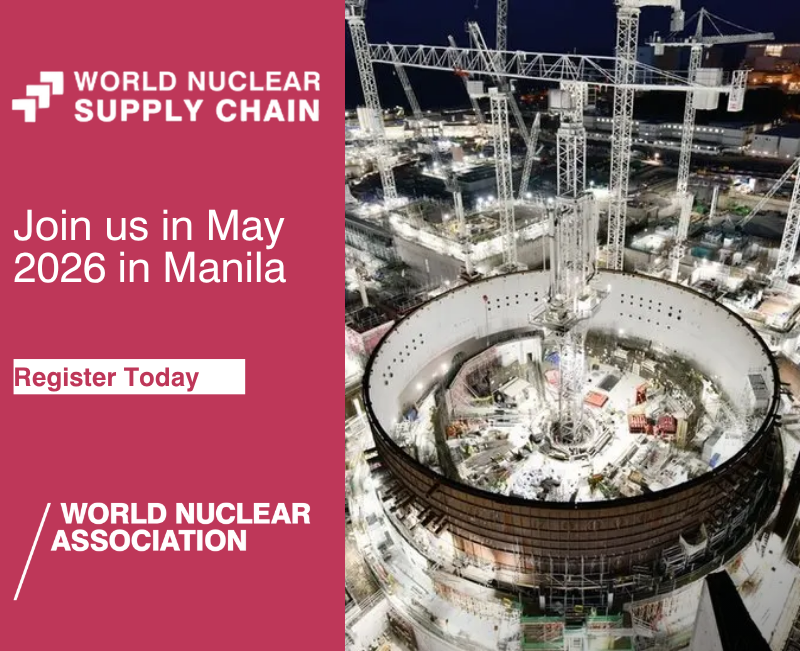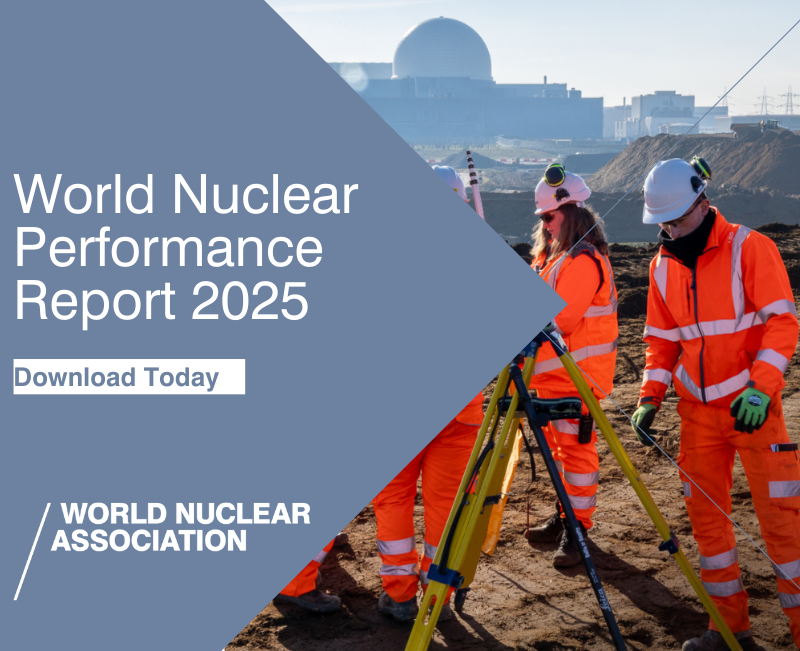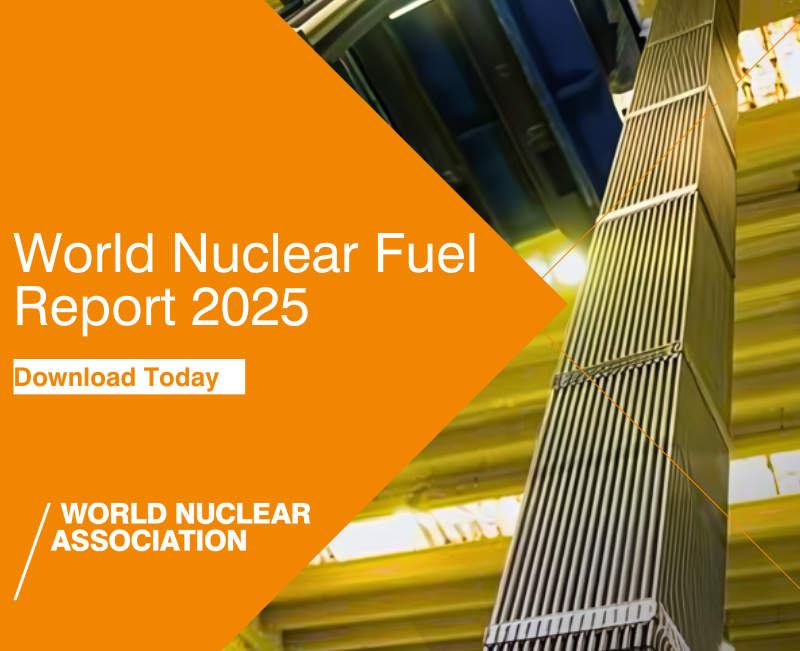The Atommash plant in Volgodonsk - part of Rosatom’s Mechanical Engineering Division - has shipped to the construction site the central void shell and inner casing for the core support barrel, components which will hold nuclear fuel once installed. The Izhora plant in St Petersburg - also part of the same Rosatom division - shipped four peripheral cavity shells which will house steam generators and pumps for circulation of the coolant.
Each item is more than 15 metres high and 8 metres wide, with dimensions that differ from items manufactured for VVER and RITM units and with special steels able to withstand temperatures up to 600ºC. Production facilities had to be adapted “to handle products as tall as a five-storey building as well as developing unique packaging that weighed a total of 700 tonnes to safely transport and roll the equipment during installation”, Rosatom said.
In total about 2,300 tonnes of equipment will be sent to the construction site where the reactor will be assembled. The total weight of the installation will be 16,000 tonnes including the concrete which will be used.
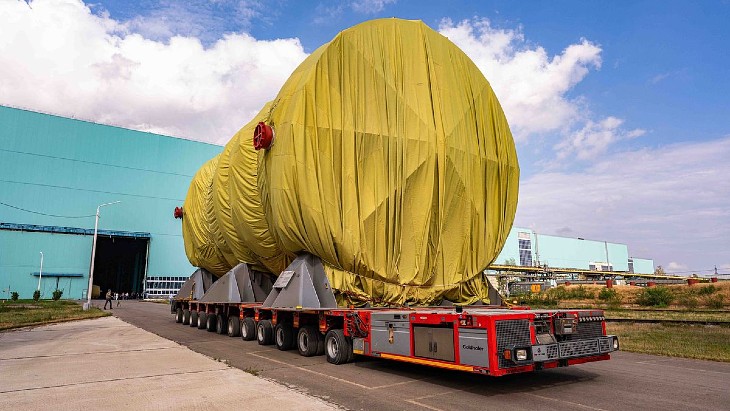
(Image: Rosatom)
Igor Kotov, Head of Rosatom’s Mechanical Engineering Division, said: “Russian designers, engineers, and machine builders are pioneering the future of the energy industry. Our machine builders, with their extensive experience and the latest scientific advancements, were the first in the world to embark on the practical realisation of the fourth generation reactor project. This achievement has laid a robust foundation for technologies that will benefit our children, grandchildren, and future generations.”
The background
The BREST-OD-300 fast reactor is part of Rosatom's Proryv, or Breakthrough, project to enable a closed nuclear fuel cycle. The 300 MWe unit will be the main facility of the Pilot Demonstration Energy Complex at the Siberian Chemical Combine site. The complex will demonstrate an on-site closed nuclear fuel cycle with a facility for the fabrication/re-fabrication of mixed uranium-plutonium nitride nuclear fuel, as well as a used fuel reprocessing facility.
A progress update in November said that the cooling tower had been built, the walls of the reactor containment building erected and the reactor shaft and the enclosing structure of the reactor vessel have also been installed.
Initial operation of the demonstration unit will be focused on performance and after 10 years or so it will be commercially oriented. The plan has been that if it is successful as a 300 MWe (700 MWt) unit, a 1200 MWe (2800 MWt) version will follow - the BR-1200.

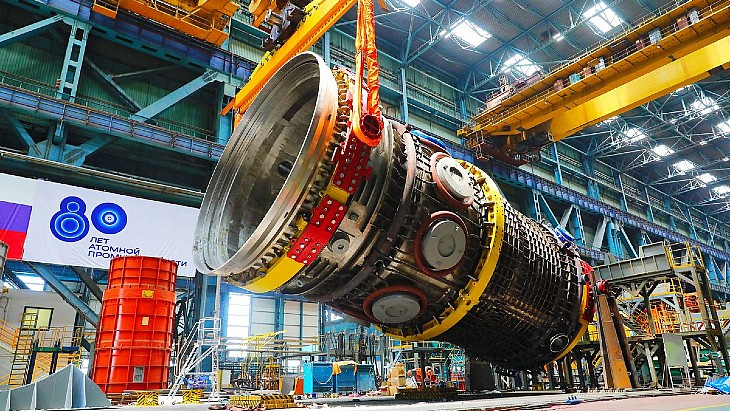



_82983.jpg)
_34792.jpg)
_16403_79272.jpg)

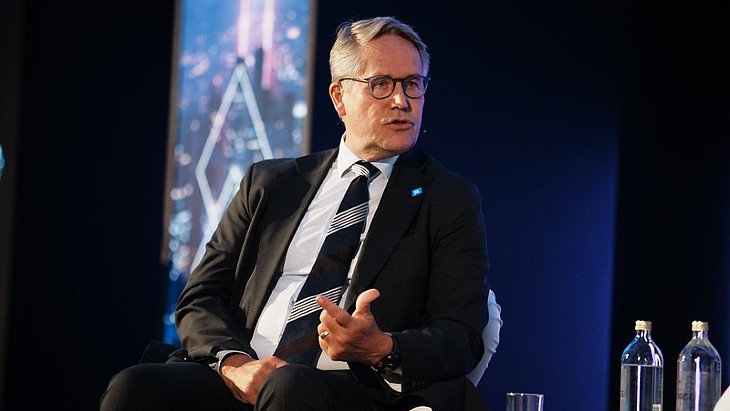
_76087_55556.jpg)
